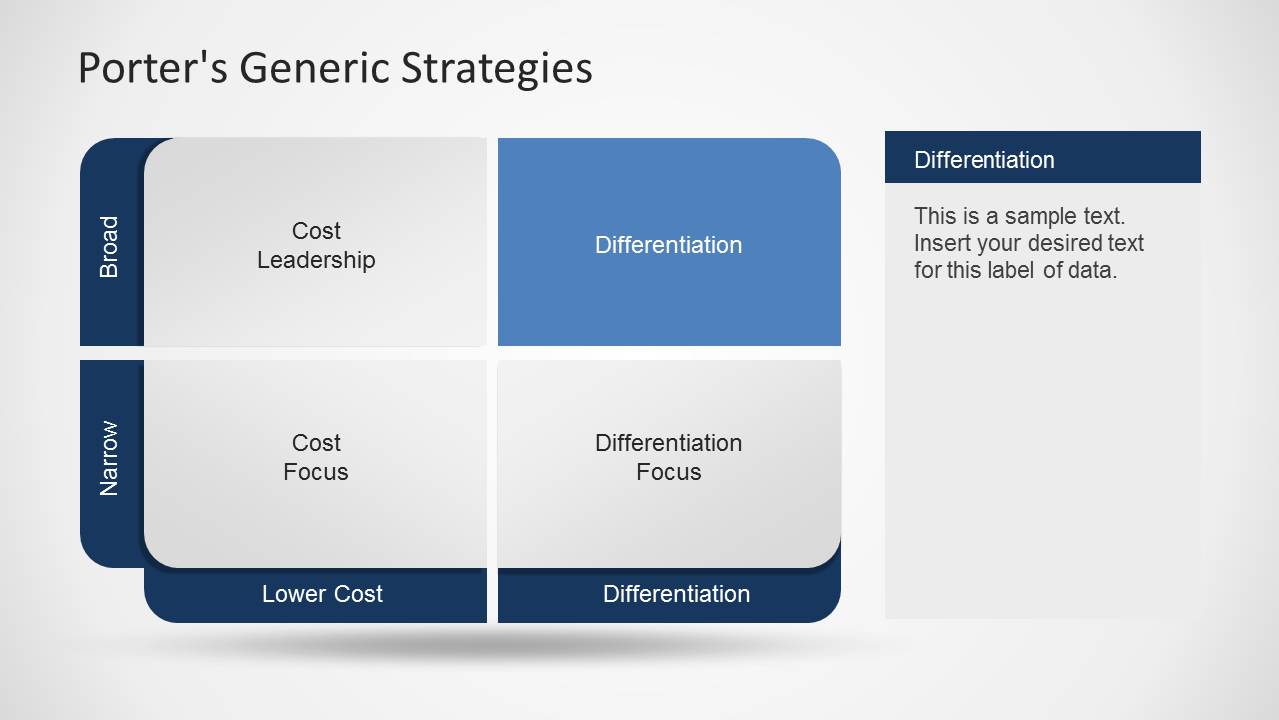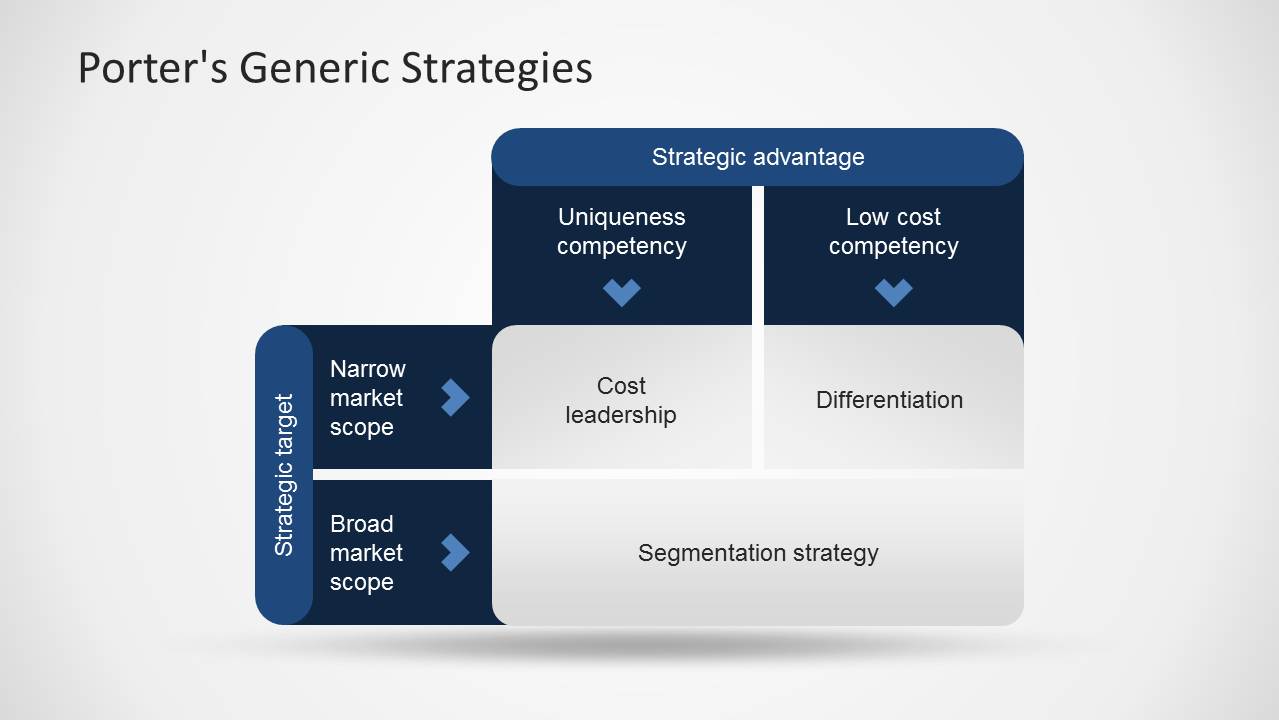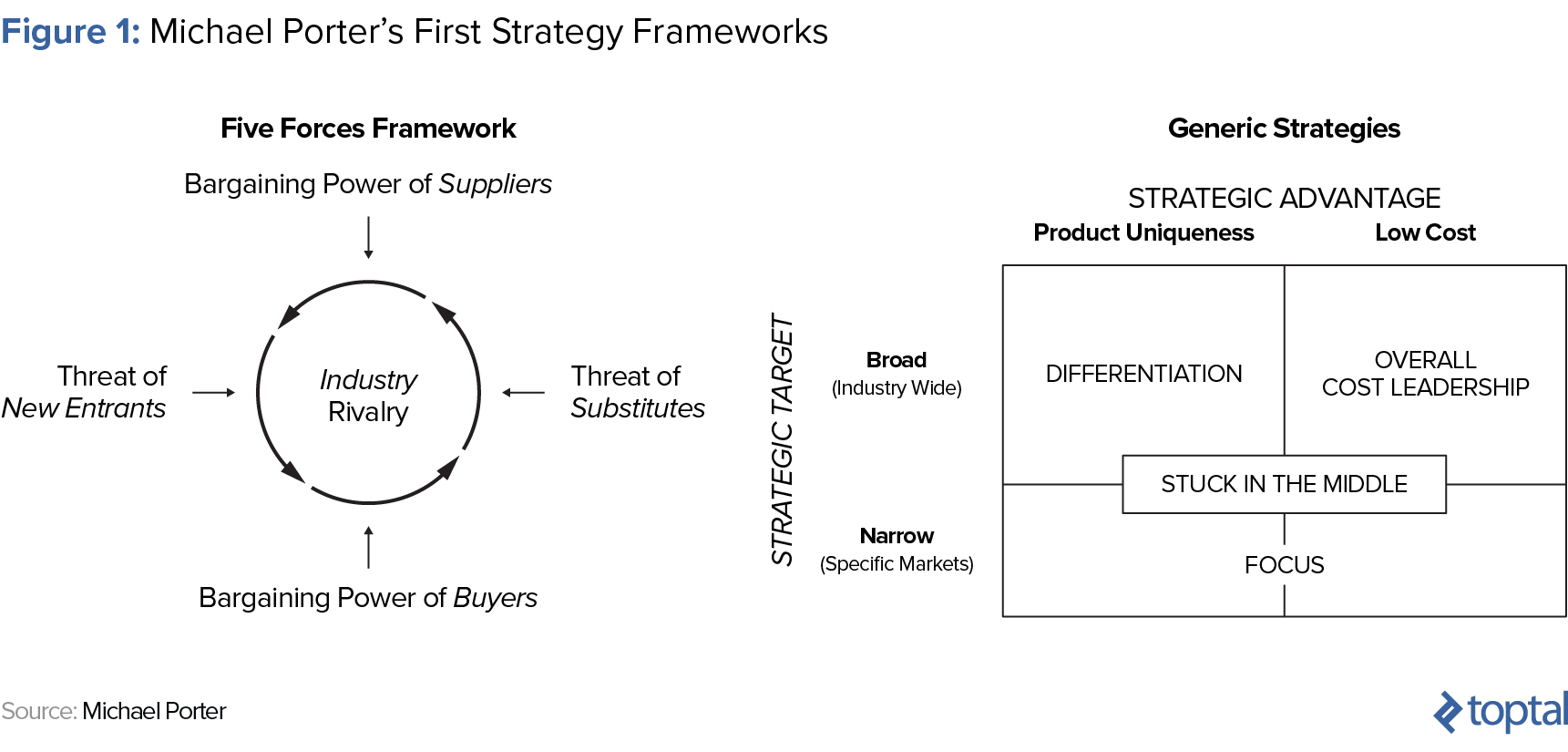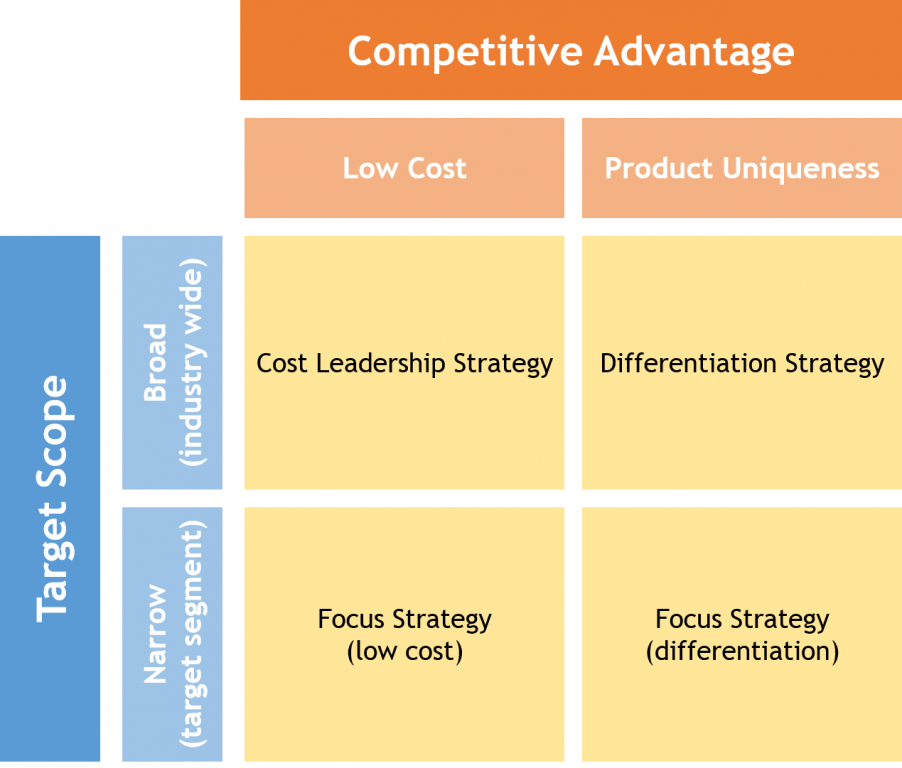Michael porter, the firm’s position could be categorized into one of the two broad strategies. There are many ways to use porter’s generic strategies in your business.

Porter's Generic Strategy PowerPoint Template SlideModel
Michael porter described four types of generic strategies, a matrix with cost leadership and differentiation on one axis, and broad market/niche along the other.

Michael porter differentiation strategy. Cost leadership, differentiation and focus. Cost leadership, differentiation, cost focus, and differentiation focus 1. According to porter, strategies allow organizations to gain competitive advantage from three different bases:
How to use porter’s generic strategies. There are two more specific ways to achieve cost leadership according to. Michael porter uses 4 strategies that an organisation can choose from.
Thereby a firm can have either of the three strategies: Michael porter developed three generic competitive strategies, that can be used by a company for competitive advantage, back in 1980. These are known as porter's three generic strategies and can be applied to any size or form of business.
Porter, michael e., competitive advantage. He then subdivided the focus strategy into two parts: The four generic strategies of porter explained:
Porter asserts that a business model can’t offer the best product or service at the lowest price and maintain a sustainable competitive advantage. This strategy costs more, so the company must be able to charge more than competitors to earn an above industry average profit. The four strategies to choose from are:
Choosing the differentiation focus strategy, you target a niche market (little competition, ‘focused. The most important step to consider when you use porter’s generic competitive strategies is to select the appropriate strategy for your business. Cost focus and differentiation focus. these are shown in figure 1 below.
Meanwhile, the firm could have a broader scope or narrow scope. Michael porter is a business professor at harvard university, and his generic strategies are to be selected based on the focus and advantage of the company, according to his 1985 book, competitive. Porter wrote in 1980 that strategy targets either cost leadership, differentiation, or focus.
With a differentiation strategy the business develops product or service features which are different from competitors and appeal to customers including functionality, customer support and product quality. Here are some ways your business may begin using gcs: It is also about how and where management decides.
Differentiation strategy is developed by businesses to provide something unique and distinct from the other offerings to ensure a competitive edge. A cost leadership strategy is an approach to building and maintaining a competitive advantage aimed at maximizing earning potential or profits. Performing different activities than the competition.
Porter suggests that differentiation takes one of two forms: Operations in his 1996 harvard business review article entitled “what is strategy?,” michael porter makes the case for several ways to create differentiation. An organization employing a strategy that attempts to be “all things to all people” will become stranded in.
Probably the three most widely read books on competitive analysis in the 1980s were michael porter’s competitive strategy (1980), competitive advantage (1985), and competitive advantage of nations (1989). I previously touched upon michael porter’s generic cost leadership strategy here. He believes that a company must choose a clear course in order to be able to beat the competition.
In 1985, in his book competitive advantage: Porter claimed that a company must only choose one of the three or risk that the business would waste precious resources. Porter called the generic strategies cost leadership (no frills), differentiation (creating uniquely desirable products and services) and focus (offering a specialized service in a niche market).
Their are some of the specific brands. The strategies developed by michael porter describe how the company achieves the competitive advantage in a chosen market. In this article we explain how you can create one for your business.
It selects one or more attributes that many buyers in an industry perceive as important, and uniquely positions itself to meet those needs. ‘being stuck in the middle’. This article will go into porter’s generic strategies with the aid of examples.
In 1979, porter argued that in order to examine its competitive capability in the marketplace, an organisation must choose between three generic strategies: Michael porter’s four generic competitive strategies. I previously touched upon michael porter’s generic cost leadership strategy here.
It was over thirty years ago, in 1980, that he published his first book focusing on competitive strategies. Creating and sustaining superior performance, michael porter, outlined a set of generic strategies that could be applied to all products or services.porter called these generic strategies “cost leadership” , “differentiation” and “focus”. A firm could either use cost advantage or differentiation.
In a differentiation strategy a firm seeks to be unique in its industry along some dimensions that are widely valued by buyers. Porter asserts that a business model can’t offer the best product or service at the lowest price and maintain a sustainable competitive advantage. Michael porter is a professor at harvard business school and is considered to be one of the most cited scholars in both economics and business.
An organization employing a strategy that attempts to be “all things to all people” will become stranded in mediocrity (i.e. Michael porter asserts that businesses can stand out from their competitors by developing a differentiation strategy. The underlying logic is that companies either must undercut their competitors (cost leadership) or they must differentiate themselves in a way that is meaningful to the.
Performing similar activities as the

Successful Competitive Strategy Examples from Startups Toptal
-
An online marketing plan that includes mobile publicity. Pr firms use some business directories, online platforms, social media, publication...
-
Crossing fingers might be one of the most complex gestures invented by humanity. Thumbs up means ok in america but in iran it has the same e...
-
If i improve sales by 15% i can get a promotion. This will help to focus on the strengths, minimize weaknesses and take the greatest possibl...
watch your six
Watch Your Six Meaning, Origin & Example. . When used in combat scenarios, “watch your six” literally means “keep an eye on what’s...

ads


